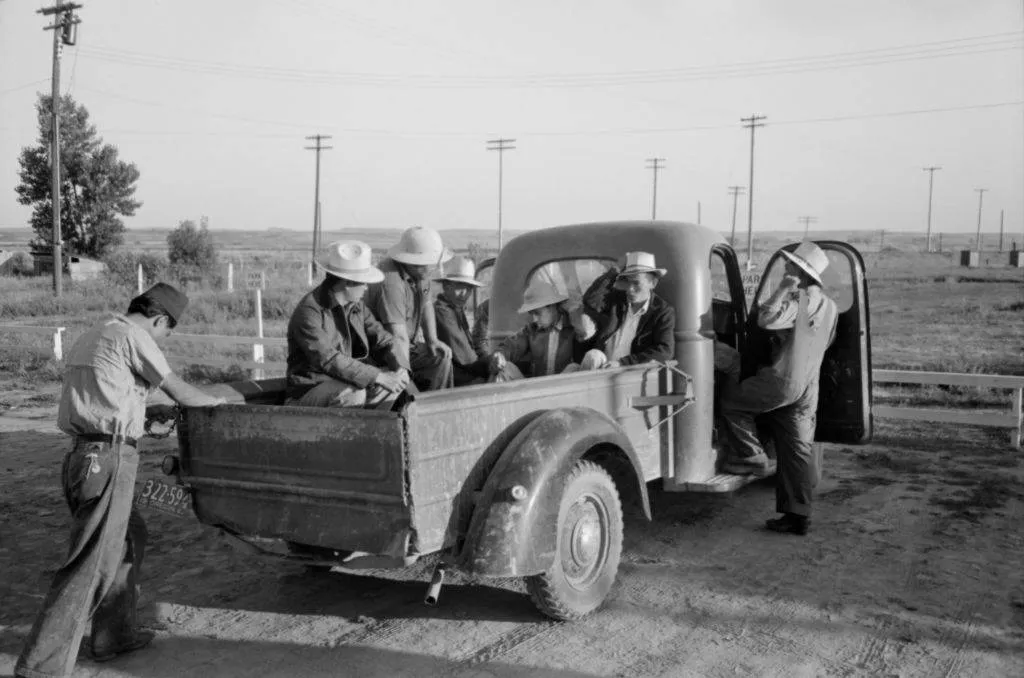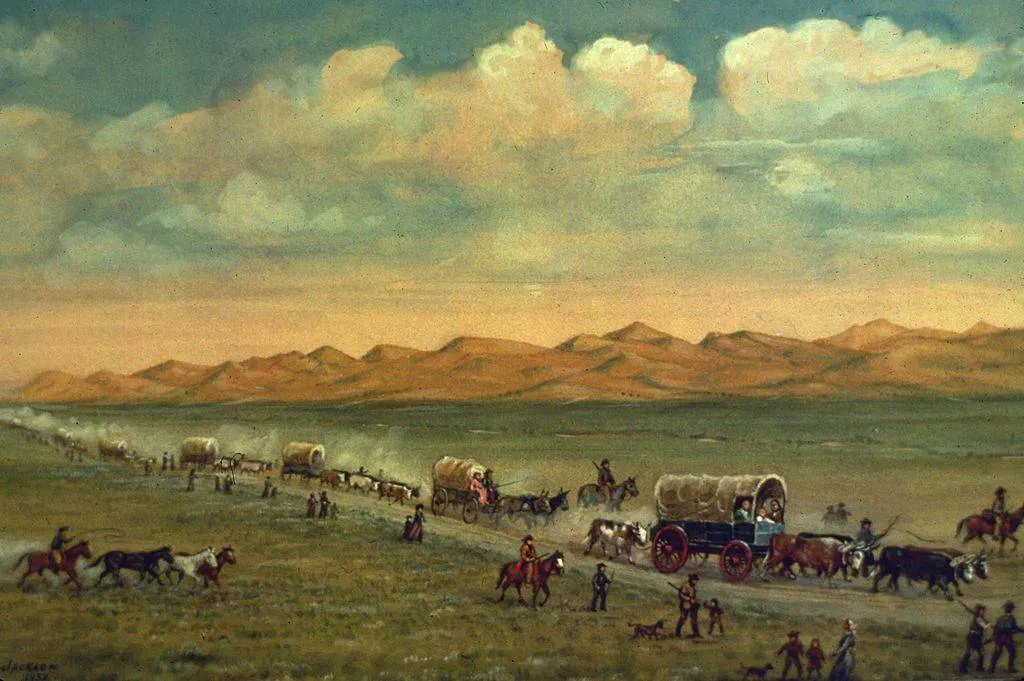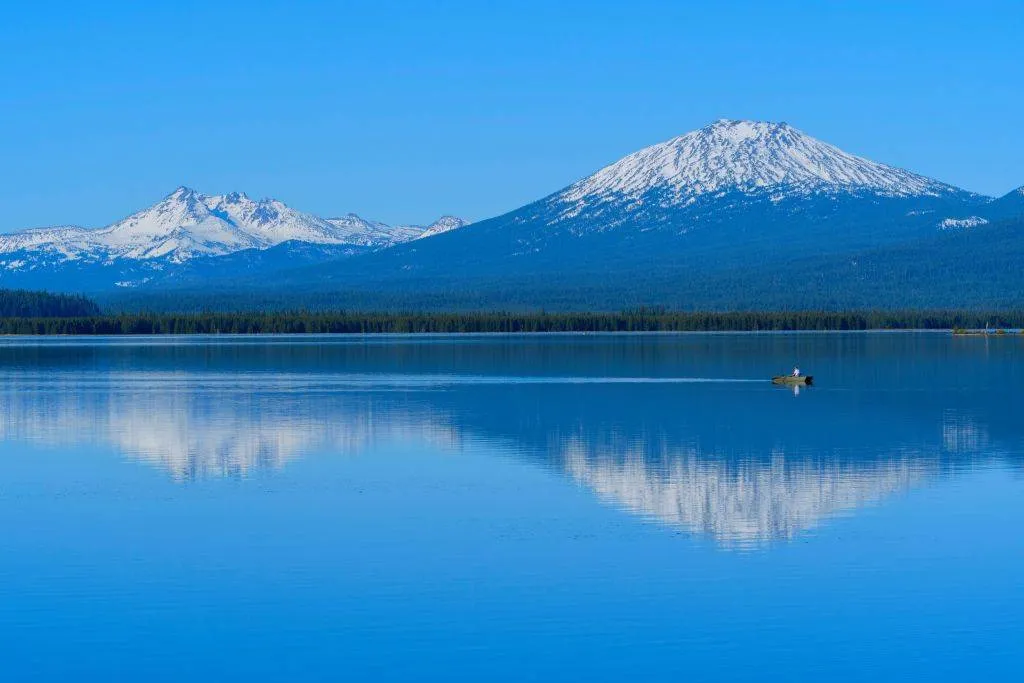When The Lake Dried Up, An Oregon Town Was Shocked To See They Weren’t The First Settlers There
After a long and intense drought in 2015, Detroit Lake in Marion County, Oregon made history as it hit an all-time low. As the reservoir dried up, something remarkable was revealed - an old railroad town that had been submerged under the lake for over 60 years! Unseen by human eyes since the 1950s, this ghostly village was now exposed to the world after many decades of being hidden beneath the water. Keep reading to learn about this incredible discovery...
Oregon Is One Of The Most Beautiful States

Oregon's Marion County is located in the Pacific Northwest, renowned for its stunning beauty. It boasts a range of landscapes, from sandy shores to lush forests.
Millions flock here to admire this gorgeous region and experience it firsthand.
Follow us for more great content
Detroit Lake Is A Beautiful Tourist Attraction In Oregon

Detroit Lake, located near the small city of Detroit in Marion County, is a popular tourist attraction in Western Oregon. It's an impressive nine miles long and offers 32 miles of stunning coastline.
People from all over come to enjoy activities such as fishing, swimming, boating and more - all while admiring its beauty.
Here's What Happened When A Massive Colony Of Ants Overtook An Abandoned Nuclear Power Plant
Detroit Lake Plays An Important Role In The Community

The lake is used for recreation and provides water to nearby towns like Salem, 46 miles away.
This is a new development though; the reservoir was created in 1953 with the construction of a dam to control flooding from the Willamette River.
The Weather Greatly Affects The Resevoir

Detroit Lake was built for practical reasons, but now it's a popular spot for recreation. In the summer, people flock to its shores and take advantage of the sunshine and cool water.
Unfortunately, weather has an unpredictable effect on this manmade reservoir; rain, snowmelt, and heat all contribute to changing water levels.
A Massive Drought Caused Detroit Lake To Fall Below Its Normal Capacity

2011 was a difficult year for Marion County and many western states due to a severe drought. This caused Detroit Lake's water level to drop 60 feet below its normal capacity by the start of summer 2015, and it eventually dropped another 83 feet in the following weeks.
Low precipitation can be worrisome as it affects not just our reservoir levels but also our environment.
This Drastic Drop Revealed Something No One Expected

The water level had plummeted to an all-time low of 1,426 feet. This was only the second time such a drastic drop had been recorded; the first being in 1969. While this wasn't the lowest it had ever fallen (1,427 feet on three previous occasions).
This time, the lake revealed something that the reservoir had been hiding from the public for so many years.
The Beginning Of Old Detroit

Old Detroit was founded in 1880, starting out as a camp that was established to house the men working on the Oregon Pacific Railroad.
The railroad was the brainchild of businessman and entrepreneur Thomas Egenton Hogg, whose idea was to connect the country through the means of a railroad. Unfortunately, the Oregon Pacific Railroad would never get to live up to its potential or the vision that Thomas Egenton Hogg had in mind.
The Formation Of The Railroad

The railroad began in the city of Salem, around 50 miles east of where Old Detroit was established. At one point, the railroad followed the path of the North Santiam River, running along the canyon floor, and it reached the foothills of the Cascade Mountains.
In Hogg's vision, he planned to continue the railroad through the mountains and onward, eventually towards the Transcontinental Railroad. By doing this, the railroad would become huge on the West Coast.
It Never Became A Reality

Unfortunately for Hogg, he ran out of money before he could make his dream become a reality. Giving up on his vision of the railroad, he instead decided to buy a steamship as a was to connect his railroad with the city of San Francisco in California.
While this may have sounded like a good fallback plan for Hogg, nothing at the time seemed to be falling into place for the businessman, and he eventually had to give up.
The End Result

Because Hogg's plan never came to full fruition, that doesn't mean it was a complete failure. The Oregon Pacific Railroad eventually came to an end at Idanha, around 15 miles west of the Cascade Mountains.
This resulted in Old Detroit becoming one of the final stops on the line. Despite the fact that Old Detroit was in a bit of a remote location, the station was often busy with loggers sending timber east via the railroad.
A Thriving Community

Although Old Detroit wasn't the most well-known town in the area, at one point, it was a booming community that had several cafes, stores, a church, a school, and even a cinema.
While life in Old Detroit may have seemed to be going well, for the farmers that lived further down the valley, things were far more difficult. This is mainly due to the North Santiam River, which would often flood their towns.
The River Was Unpredictable

Oregon historian Bob Reinhardt told the Statesman Journal in 2015, "For farmers and boosters in the Willamette Valley, the North Santiam made life hell."
He continued, "Gathering snowmelt and rainfall in the Cascades, the river contributed to floods that washed through Salem and other valley towns, sometimes causing millions of dollars in damage."
Solving The Problem

In 1938, Congress passed the Flood Control Act. This led to the authorization of the use of civil engineering projects in order to control flooding and prevent further disasters across the United States.
In the case of the farmers in the Willamette Valley, people realized that the construction of two dams would significantly decrease the chances of flooding. On top of that, it would also be a way to generate electricity at the same time.
Big Plans For The Dam

Much like Hogg who came before them, those who were in charge of building the Detroit Dam had really big plans for the project.
When it was finally completed, the dam was supposed to stretch 1,580 feet from end to end and stand an impressive 360 feet tall. The vision was also that the behemoth of a structure would be able to contain 455,000 acre-feet of water from the North Santiam River.
There Were Some Issues

Of course, there was going to be at least one problem when it came to these grandiose plans for the mega-dam. For starters, it would require at least 3,580 acres of space, including the area where Old Detroit once stood.
So, it was agreed upon, and the people living in Old Detroit began to pack their things and leave the area for good. It wouldn't be long before the once-bustling town would be at the bottom of a reservoir.
Finding A New Home

In records that have been recently uncovered, those who were going to be displaced out of Old Detroit asked the government for new land to move onto to considering they were being forced out of their homes.
Unfortunately, the authorities denied their request. However, they had a saving grace when a local timber merchant decided to lend a hand. He offered for the people of Old Detroit to use one of his old logging sites. They took him up on the offer, and by June of 1952, many of the members of the old community had purchased parts of the land.
The New Detroit

Situated on a hill just above where the old town was located, the people of Old Detroit established the new town of Detroit, even keeping the same name. Some families even kept their same houses, moving them piece-by-piece by sled to the site of the new town.
Today, there are still some buildings in Detroit, meticulously maintained over the years, that once belonged on the grounds of the old town.
Old Detroit Resurfaces

In October 2015, some people were lucky enough to catch a glimpse of Old Detroit when the water levels of the reservoir were at an all-time low.
Along with the remnants of the town, there was also a 19th century-old wagon that was revealed to be beneath the water. Incredibly, thanks to the low oxygen levels in the lake, it was extremely well preserved.
The Dam Is Put Into Operation

In 1953, the dam that was supposed to solve everyone's problems, and was the fifth largest of its kind in the country, finally went into operation. Not long afterward, the river that would eventually become a reservoir began to swallow the town of Old Detroit.
However, the former town wasn't in the direct center of the soon-to-be reservoir, so on days when the water is extremely low, it's possible to see some of the old structures that were left behind.
They Knew Where It Came From

As if finding the wagon wasn't incredible enough, there was a plaque on it that signified it was made by the Milburn Wagon Company and was produced in 1875.
The company was based out of Toledo, Ohio, and was the biggest manufacturer of wagons at the time. According to Cara Kelly, an archaeologist with the U.S. Forest Service, it's likely that this wagon was involved in the construction of the local railroad.
Wagons Eventually Lost Their Usefulness

Although at one point wagons were one of the best and most common ways to travel and transport goods, eventually, they lost their usefulness compared to other technologies. By the time that the citizens of Old Detroit abandoned their town, wagons had almost entirely been replaced with automobiles.
So, many people chose to leave the wagons that were lying around the town when the dam was constructed and Old Detroit sank beneath the water.
The Wagon Was Especially Well Made

It's clear that the wagons manufactured by the Milburn Wagon Company were incredibly well made, which would explain how the one in Old Detroit lasted so long beneath the water.
When talking with the Statesman Journal in February 2020, David Sneed from the vehicle archive "Wheels that Won the West" stated, "That wagon was built for the country that you're in. With those extra spokes, the metal encased hubs, and the 'Oregon brake,' it's built to engage rough terrain."
There Was Concern Over Vandalism

While the locals were thrilled to be able to see the remains of Old Detroit, there was concern about what some people might do to the area. Zahn expressed his concerns that vandals might end up destroying the historical find. Cara Kelly agreed and even asked residents who knew where it was to keep the information to themselves.
She told the Statesman Journal, "I don't think people realize that they aren't supposed to collect items off public land [...] Once someone removes something, nobody will get to see that piece of history."
There Was No Hiding The Discovery

Unfortunately, by December 2015, the wagon discovery had gone viral. In order to prevent people coming from all over to see the exposed remains of Old Detroit, a group of local businessmen formulated a plan.
They thought about the possibility of excavating the site, allowing them to remove the wagon and put it in a museum that would ensure it wouldn't be tampered with. However, archaeologist Cara Kelly was quick to show them several flaws in their plans.
The Wagon Was Too Fragile

In February 2020, Cara Kelly explained to the Statesman Journal, "The issue is that in trying to remove [the cart] it would just fall apart. It would just crumble. It's also half-buried in the mud."
Furthermore, if experts were able to remove the wagon intact from out of the mud, it would need to be placed in a special storage facility, something that doesn't exist in the area. Moving it anywhere further would also be too risky.
The Wagon Hadn't Seen The Light Of Day In 60 Years

Kelly believes that the wagon becoming exposed in 2015 may have been the first time that the wagon has been seen since it disappeared more than 60 years ago. However, she went on to note that the wagon may not have originated in Old Detroit.
She commented, "This might not have been its original resting place. It could've come from anywhere in the town of Detroit or even up the drainage. The flood of 1964 moved a lot of things; it even brought houses down."
The Future Of The Reservoir

In 2019, questions once again rose about the future of the lake and the historical relics that lay at the bottom of it. Furthermore, since the dams' construction, studies have shown that the wild fish population of the Willamette River has been at a consistent and drastic decline.
It is believed that the building of the structures significantly tainted their natural habitat and unfortunately even cut off their spawning grounds from the rest of the river.
Fixing The Habitat

In response to a 2008 legal proposal made to protect fish species such as steelhead and wild salmon, the United States Army Corps of Engineers put forth a solution to the problem.
They suggested the construction of a 300-foot tower at Detroit Dam, which the engineers claimed could reverse the negative effects that the dam had on the river's ecosystems. They also proposed a particular process of capturing migrating fish and relocating them safely downstream.
There Was A Catch

Unfortunately, these seemingly worthwhile solutions came with a pretty big catch. In order for these projects to be put into development, the engineers explained that they would need to drain the reservoir as low as 1,310 feet, even lower than the result of the drought in 2015.
Furthermore, it would most likely take place in the summer, which would drastically hurt tourism in the area. Local residents would lose one of the best parts about living in Detroit.
Criticism From Locals

At the moment, the project has yet to begin, as locals have voiced their concerns, especially those whose livelihood depends on the river. Furthermore, those who study the relics beneath the water from Old Detroit had their own concerns.
One of the biggest reasons is that the wagon was damaged from its short time being exposed to the elements, so an entire summer could prove to be disastrous for not just the wagon but all the artifacts of Old Detroit.
The Mud Kept It Safe

After the wagon reappeared at the surface a second time, concerns arose once again that vandals might come and loot or disrupt the historical site. However, this time, authorities were much more confident that the deep mud and water would keep people away.
Zahn commented, "It's very difficult to reach and almost always underwater. I'm happy that it happened and glad whenever someone talks about it or says that they've seen it."
Another Drought

By January 2020, the water levels of the reservoir reached normal heights and the wagon sank beneath the water once again. However, it wasn't long before there was another threat, and it was, yet again, another drought.
In March of the same year, experts were concerned that a potential lack of precipitation could once again cause the Detroit Lake to dry out. If this happened, they were worried that the relics wouldn't survive another prolonged exposure to the elements.
All Is Well...For Now

Currently, everything at Detroit Lake seems to be under control, with the wagon remaining underwater. Photographer Brent McGregor spoke to the journal about the wagon to Statesman Journal saying, "The real beauty with this one is that it's still out there, sticking out of the mud and well-preserved."
He continued, "You can use your imagination and think about the old town. It’s great to have it there.” It's a piece of history that's unique to the area and will hopefully be there for years to come.
Historians Struggled To Decipher 230-Year-Old Riddle That Was Discovered On A French Beach









